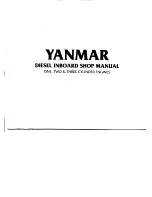
PEC 013
Page
54
of
71
12/20/13
14.0
Speed Control Management (SCM)
Overview
The engine can include tools to help fleets encourage fuel efficient operation of the
vehicle. These tools make up the SCM feature. The SCM feature consists of two
control strategies: Progressive Shift (PGS) and Gear Down Protection (GDP). PGS
and GDP can be enabled separately or in combination.
PACCAR offers pre-approved and validated PGS and GDP settings for most manual
transmission powertrain configurations. Upon selection of at least one of the SCM
features, optimized shift points and the gears in which shift points are active are
identified by PACCAR and programmed into the vehicle. These shift points are
based on the customer’s powertrain configuration and requested performance
optimization goals.
Standard Feature
Without SCM
Feature Options
PGS
GDP
PGS and GDP
Progressive Shift (PGS)
The progressive shift module is typically used to encourage earlier shifts in lower
gears to improve fuel economy. By shifting earlier, the driver avoids operating the
engine at high RPMs, thus improving fuel economy. PGS
is a “soft” RPM limit that
restricts the rate of engine acceleration when the engine speed is above a
predefined engine speed limit. This provides a balance between encouraging a
driver to shift at lower engine speeds and
the operator’s needs to remain in a gear
longer to execute a shift under heavy load and/or on a hill.
The driver’s perception of
the restricted engine acceleration gives a clear indication to shift to the next higher
gear. Full engine acceleration capability is restored after the operator executes a
shift where the engine speed falls below the customer defined limit in the next
gear. Along with limiting engine acceleration, this function also provides a visual
notification to the operator to shift via the driver display.
The progressive shift module will provide up to two engine speed limits, allowing
customers to use a more aggressive limit in lower gears and a less aggressive limit
in higher gears. 10-speed and 13-speed transmissions will receive a two-step
engine speed limit, and 18-speed transmissions will receive a single step. The first
and last gear in which each progressive shift range is programmed ensures it is
properly configured to
the customer’s application and for the specified powertrain
components.
















































